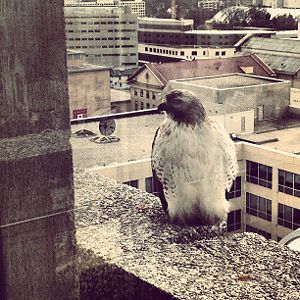Geometry and Topology Seminar 2019-2020
The Geometry and Topology seminar meets in room 901 of Van Vleck Hall on Fridays from 1:20pm - 2:10pm.
For more information, contact Shaosai Huang.
Spring 2019
| date | speaker | title | host(s) | |||||||||||||||||||||||||||||
|---|---|---|---|---|---|---|---|---|---|---|---|---|---|---|---|---|---|---|---|---|---|---|---|---|---|---|---|---|---|---|---|---|
| April 5 | Mark Pengitore (Ohio) | TBA | (Dymarz)
Fall 2018
Fall AbstractsTeddy Einstein"Quasiconvex Hierarchies for Relatively Hyperbolic Non-Positively Curved Cube Complexes" Non-positively curved (NPC) cube complexes are important tools in low dimensional topology and group theory and play a prominent role in Agol's proof of the Virtual Haken Conjecture. Constructing a hierarchy for a NPC cube complex is a powerful method of decomposing its fundamental group essential to the theory of NPC cube complex theory. When a cube complex admits a hierarchy with nice properties, it becomes possible to use the hierarchy structure to make inductive arguments. I will explain what a quasiconvex hierarchy of an NPC cube complex is and briefly discuss some of the applications. We will see an outline of how to construct a quasiconvex hierarchy for a relatively hyperbolic NPC cube complex and some of the hyperbolic and relatively hyperbolic geometric tools used to ensure the hierarchy is indeed quasiconvex. Marissa Loving"Least dilatation of pure surface braids" The n-stranded pure surface braid group of a genus g surface can be described as the subgroup of the pure mapping class group of a surface of genus g with n-punctures which becomes trivial on the closed surface. I am interested in the least dilatation of pseudo-Anosov pure surface braids. For the n=1 case, upper and lower bounds on the least dilatation were proved by Dowdall and Aougab—Taylor, respectively. In this talk, I will describe the upper and lower bounds I have proved as a function of g and n. Sara Maloni"On type-preserving representations of thrice punctured projective plane group" In this talk, after a brief overview on famous topological and dynamical open questions on character varieties, we will consider type-preserving representations of the fundamental group of the three-holed projective plane N into PGL(2, R). First, we prove Kashaev’s conjecture on the number of connected components with non-maximal euler class. Second, we show that for all representations with euler class 0 there is a one simple closed curve which is sent to a non-hyperbolic element, while in euler class 1 or -1 we show that there are six components where all the simple closed curves are sent to hyperbolic elements and 2 components where there are some simple closed curves sent to non-hyperbolic elements. This answers a generalisation of a question asked by Bowditch for orientable surfaces. In addition, we show, in most cases, that the action of the pure mapping class group Mod(N) on these non-maximal components is ergodic, proving Goldman conjecture in those cases. Time permitting we will discuss a work in progress with Palesi where we expend these results to all five surfaces (orientable and non-orientable) of characteristic -2. (This is joint work with F. Palesi and T. Yang.) Dingxin Zhang"Relative cohomology and A-hypergeometric equations" The GKZ hypergeometric equations are closely related to the period integrals of algebraic varieties. Based on the theorems of Walther--Schulze, we identify the set of solutions of a certain GKZ system with some relative homology groups. Our result generalizes the theorem of Huang--Lian--Yau--Zhu. This is a joint work with Tsung-Ju Lee.
Zhongshan An"Ellipticity of the Bartnik Boundary Conditions" The Bartnik quasi-local mass is defined to measure the mass of a bounded manifold with boundary, where a collection of geometric boundary data — the so-called Bartnik boundary data— plays a key role. Bartnik proposed the open problem whether, on a given manifold with boundary, there exists a stationary vacuum metric so that the Bartnik boundary conditions are realized. In the effort to answer this question, it is important to prove the ellipticity of Bartnik boundary conditions for stationary vacuum metrics. In this talk, I will start with an introduction to the Bartnik quasi-local mass and the moduli space of stationary vacuum metrics. Then I will explain the ellipticity result for the Bartnik boundary conditions and, as an application, give a partial answer to the existence question. Xiangdong Xie"Quasi-isometric rigidity of a class of right angled Coxeter groups" Given any finite simplicial graph G with vertex set V and edge set E, the associated right angled Coxeter group (RACG) W(G) is defined as the group with generating set V whose generators all have order 2 and where uv=vu for each edge (u,v). The classical examples are the reflection groups generated by the reflections about edges of right angled polygons (in the Euclidean plane or the hyperbolic plane). We classify a class of RACGs up to quasi-isometry. This is joint work with Jordan Bounds. Spring AbstractsArchive of past Geometry seminars2017-2018 Geometry_and_Topology_Seminar_2017-2018
|
